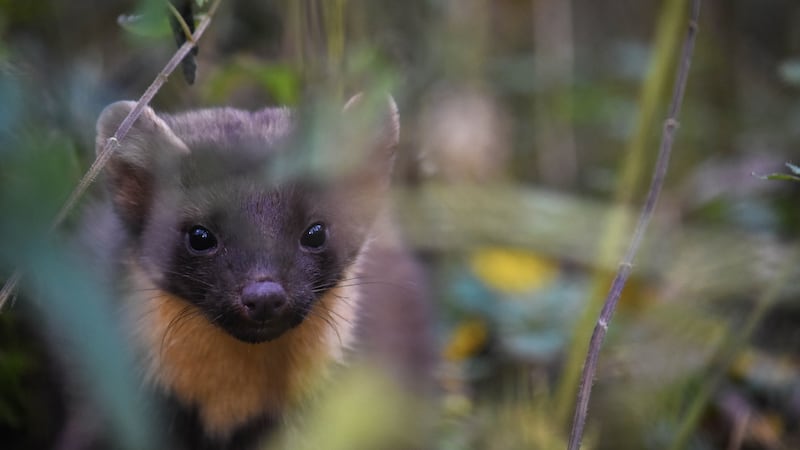The notion that any woodland is good for Ireland’s native red squirrel, an endangered species being undermined by its grey cousin, has been scotched by new research showing non-native conifer plantations are not in their best interests.
Current red squirrel conservation strategies in Ireland and the UK favouring non-native conifer plantations are likely to have a detrimental impact on red squirrels, according to scientists from Queen's University Belfast and the University of St Andrews .
The red squirrel has been in Ireland since before the last ice age but continues to disappear from forests invaded by grey squirrels. There has been a 20 per cent decline since the alien grey was introduced a century ago, with half of that decline occurring in the past decade. There are concerns the red squirrel could be gone from Northern Ireland within a generation.
The study shows, however, native predators in native woodland, and not conifer plantations, are key ingredients for red squirrel survival. This contradicts existing conservation strategies promoting non-native conifer planting. In contrast, native predators and woodlands ensure “native biodiversity” that enable red squirrels to thrive.
Conifer afforestation strategies are often sold as a nature-based solution for tackling climate change and the biodiversity crisis – and particularly the plight of the red squirrel. But this approach is challenged in a study published on Wednesday in the Proceedings of the Royal Society B – Biological Sciences.
Camera traps
Together with Ulster Wildlife and citizen scientists, researchers used camera traps to survey more than 700 sites across Northern Ireland over a five-year period for red squirrels, grey squirrels and pine martens.
With the recovery of the pine marten, conifer plantations planted under the guise of protecting the red squirrel “are likely to have a damaging impact on the species survival”, the results show.

Until recently, the pine marten was restricted to western counties of Ireland and northern reaches of the Scottish Highlands. Following its protection in the 1970s and 1980s, “this native predator has made an astounding recovery”, the study notes.
Previous research confirmed the pine marten benefits the red squirrel by providing natural biological control of the invasive grey squirrel. This study indicates the presence of pine marten increases red squirrel occurrence across the landscape, especially in native broadleaf woodlands.
"This is because the pine marten suppresses the grey squirrel regardless of habitat," said lead author Dr Joshua P Twining of Queen's University. However, this effect is reversed in large non-native conifer plantations, where the pine marten reduces the occurrence of red squirrels. This could be due to the lack of alternate prey and refuges for red squirrels "in highly simplified landscapes".
“However, it is likely linked to the fact grey squirrels don’t do well in these habitats, and thus following pine marten recovery, red squirrels do not get the benefits of release from their nemesis as they do elsewhere in the landscape,” Dr Twining added.
There is a need to develop alternative conservation strategies for the red squirrel, focused on planting native woodlands alongside continued pine marten recovery, he said.
“Restoration of native predators is a critical conservation tool to combat the ongoing biodiversity crisis, but this must be in conjunction with maintenance and protection of natural, structurally complex habitats.”
Ireland and the UK have some of the lowest forest cover in Europe, and more than 75 per cent of it is made up of non-native timber plantations.










